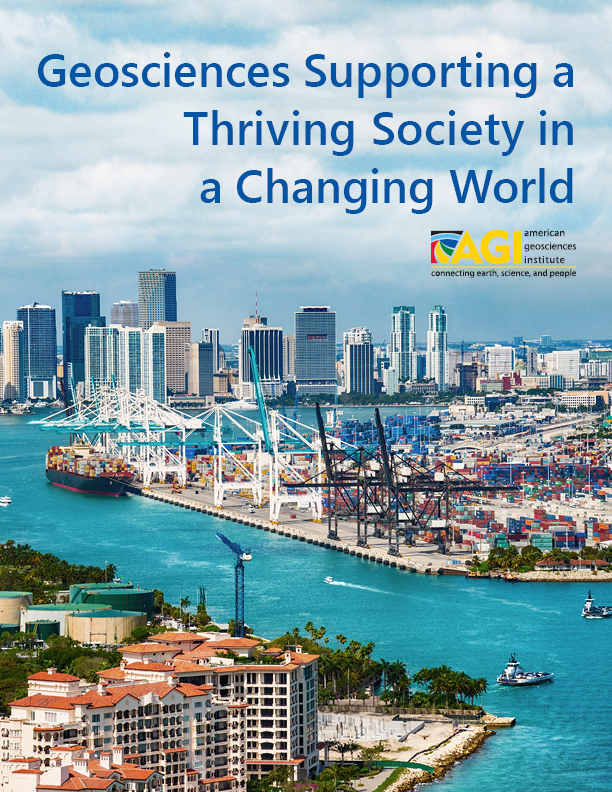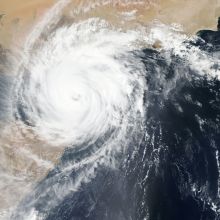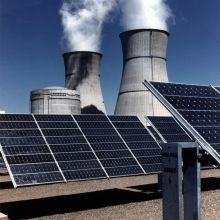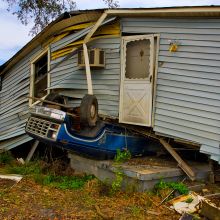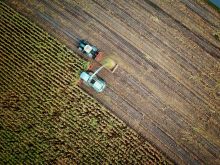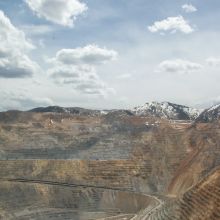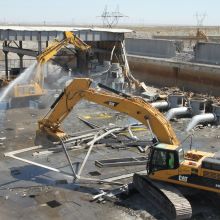Our Future: Geosciences Supporting a Thriving Society in a Changing World
The geosciences—earth, atmospheric, and ocean sciences—are critical to ensuring a thriving society and economy by providing the raw materials and expertise necessary for the production and resilience of food, water, energy, and infrastructure. Economic and population growth, climate change, and the creation of new technologies are continuing to increase the demand for these resources, requiring a corresponding advancement in geoscience capacity to meet these needs. By ensuring we understand how people and the planet interact, the geosciences inform solutions to growing environmental, health, and safety challenges.
The geosciences help us thrive in a changing world by:
- Informing climate change mitigation and adaptation strategies that support continued economic and societal well-being
- Ensuring sufficient supplies of clean water for a growing population
- Developing sustainable energy to power the nation
- Building resiliency to natural hazards to reduce human and economic harm
- Managing healthy soils to meet the food security needs of humanity
- Providing raw mineral resources for modern society
- Expanding opportunities and mitigating threats in the ocean and coasts
- Managing waste for a healthy society
- Enabling these activities by increasing diversity, equity, and inclusion and meeting future geoscience workforce and education needs
Although we highlight nine critical issues, they are interwoven with the other physical, chemical, biological, and human components of the earth system, sometimes creating complex feedbacks. In our changing world it is crucial to understand when, where, and how the critical issues detailed in this document intersect with one another and with other policy areas. Considering these critical issues and their convergences in decision-making will lead to positive impacts on economic growth and a thriving society.
Examples of Critical Needs and Geoscience
- Climate Change + Resilience, Adaptation, & Sustainability: Climate change mitigation involves taking actions to reduce the amount of carbon dioxide in the atmosphere, thus reducing risks associated with a changing climate. Adaptation helps society and natural systems to deal with consequences of climate change. Managing risks from climate impacts protects communities and ecosystems and strengthens the resilience of the economy.
- Water + High Quality Geospatial Data and Maps: Understanding the distribution of rock units and their geologic, chemical, and physical properties benefits the water resources community. Knowledge of which units have high, low, or no porosity; fracture vs. inter-granular porosity, etc., is essential in assessing groundwater hydrology.
- Energy + Technology & Engineering: Innovative technology and engineering is essential to understanding alternative exploration scenarios for energy resources.
- Natural Hazards + Infrastructure: Levee, floodwall and dam failures can be anticipated and avoided with proper assessments.
2020: Edenville Dam
2017: Oroville Dam
2005: New Orleans Levees and Floodwalls
1977: Laurel Run Dam - Natural Hazards + High Quality Geospatial Data and Maps: High quality mapping of bedrock and surficial materials is essential to understanding processes that involve the potential for natural hazards. Examples include mapping active faults or the relative stability of slope materials that could lead to landslide or produce slow mass-movement hazards.
- Soils + Global Change: Global changes in temperature, precipitation, and nutrients will impact soils and agriculture in the United States.
- Mineral Resources + Technology & Engineering: Mineral resources provide critical components for items that society relies on every day such as cell phones, batteries, and cars. Technology and engineering help geoscientists understand the extent and accessibility of the nation’s mineral resources.
- Oceans & Coasts + Resilience, Adaptation, & Sustainability: Coastal cities across the U.S. are becoming more sustainable and resilient to disasters such as coastal flooding and hurricanes through adaptation informed by geoscience research.
Miami
Boston
New York - Oceans & Coasts + Infrastructure: Ports are an important economic driver in coastal areas that create American jobs and help transfer goods to communities across the nation. Ports also serve as significant resources for national defense and emergency preparedness.
Norfolk
Los Angeles
Newark/New York - Waste Disposal + Public Health: Poor waste handling and disposal can lead to environmental pollution and cause diseases in animals and humans. •2008: Kingston Coal Slurry Spill •2005: Hurricane Katrina •1970s: Agriculture Street Landfill
- Workforce + Thriving Economy: A strong geoscience workforce can help create a thriving society by sharing their knowledge with the public and helping people to understand Earth’s processes. A workforce made of people from diverse backgrounds is best positioned to respond to our Nation’s needs, including ensuring a society safe from changing hazards.
Critical Needs Authoring Committee
National Association of State Boards of Geology (ASBOG)
Geological Society of America (GSA)
American Association of State Geologists (AASG)
National Cave and Karst Research Institute (NCKRI)
American Association of Petroleum Geologists (AAPG)
American Meteorological Society (AMS)
National Ground Water Association (NGWA)
Society of Economic Geologists (SEG)
Seismological Society of America (SSA)
Paleontological Society
Association for Women Geoscientists (AWG)
Soil Science Society of America (SSSA)
American Institute of Professional Geologists (AIPG)
Christopher Keane, Emilie Sinkler, Jessamine Straub, Lia Pikus, Brenna Tobler

